The acronym GTI is almost as iconic as the Golf itself. After all, these three magic letters first appeared on the Golf 44 years ago, and while it wasn't the first sporty compact hatchback, it was the Golf GTI who defined this class that, over the years, more and more competing brands wanted to step on.
A good case of failed perspectives, as the Germans thought to make a special series of 5000 units and produced… 462,000 units of the original GTI, out of a total of 2.3 million stations circulating around the world by the end of last year .
The only revolution registered at Volkswagen in recent decades was the creation of the ID electric brand, and it would be very strange if the new Golf GTI VIII (8) were not a Golf GTI VII (7)… to which an “I” was added ”.

more distinguished
Visually note the 10 small LED fog lights (five by optics) integrated in the grille at the bottom of the bumper and also a band of illumination across the entire width of the front section, which comes to life when driving at night. While at the rear, the differences are more subtle, but they exist in the black edge of the bumper, in the specific-line optics and in the oval exhaust outlets, closer to the extremes of the car.
The same logic of moderate evolution was followed in the interior, where the big news are the front seats that, for the first time, have integrated headrests. The retro-checkered upholstery pattern and side bolster reinforcements would only be in the news if they were gone.

Regarding the other versions of the new generation, we also have here the two digital screens defining much of what the onboard panel is: an 8.25” one serving as a control center slightly directed towards the driver (and which can have a diagonal 10.25” as an option) and the 10.25” instrumentation where there are graphics and specific information on this which is the sportiest version of the new Golf so far.
The steering wheel has a thicker rim and the pedals are stainless steel. There are high-quality materials and finishes (just the occasional shinier plastic doesn't make that impression) and the door pockets are large and lined.
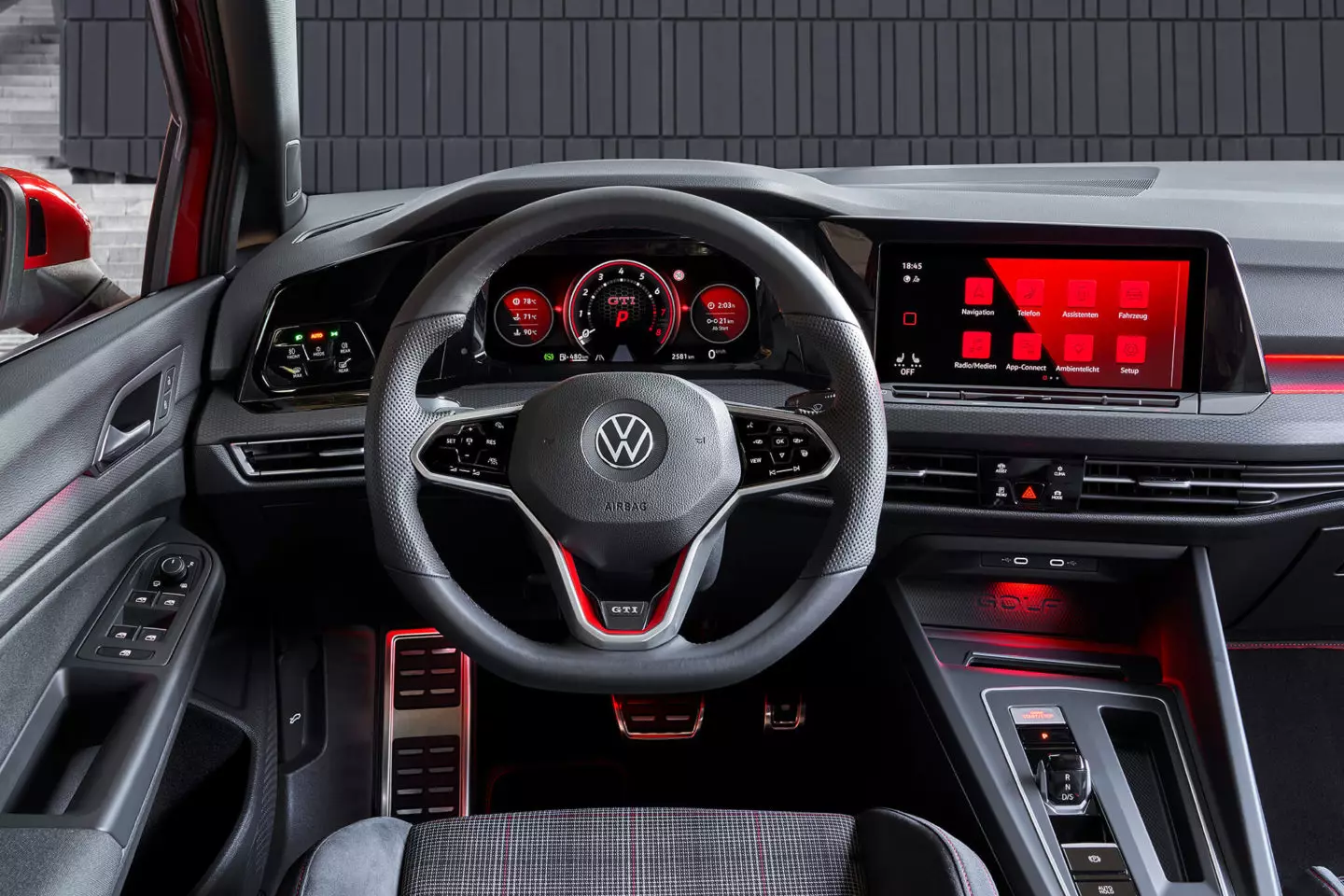
There are direct rear ventilation outlets (with temperature regulation) on a console in the middle (where there are two USB-C ports), whose perceived quality is unconvincing, but the worst part is the usual tunnel in the floor that steals space and freedom of movement from the rear center passenger. The seatbacks fold down 1/3-2/3 and can create a completely flat loading area, if the movable boot platform (in very usable ways) is placed in the highest position.
EA888 continues to evolve
The previous Golf GTI featured a 2.0 l four-cylinder (EA888) version with 230 hp and a more powerful 245 hp Performance. Now the entry step is higher, placed precisely on this second level, with the same power and with some innovations that aimed, above all, to reduce emissions/consumption and the engine's response in low and high regimes.
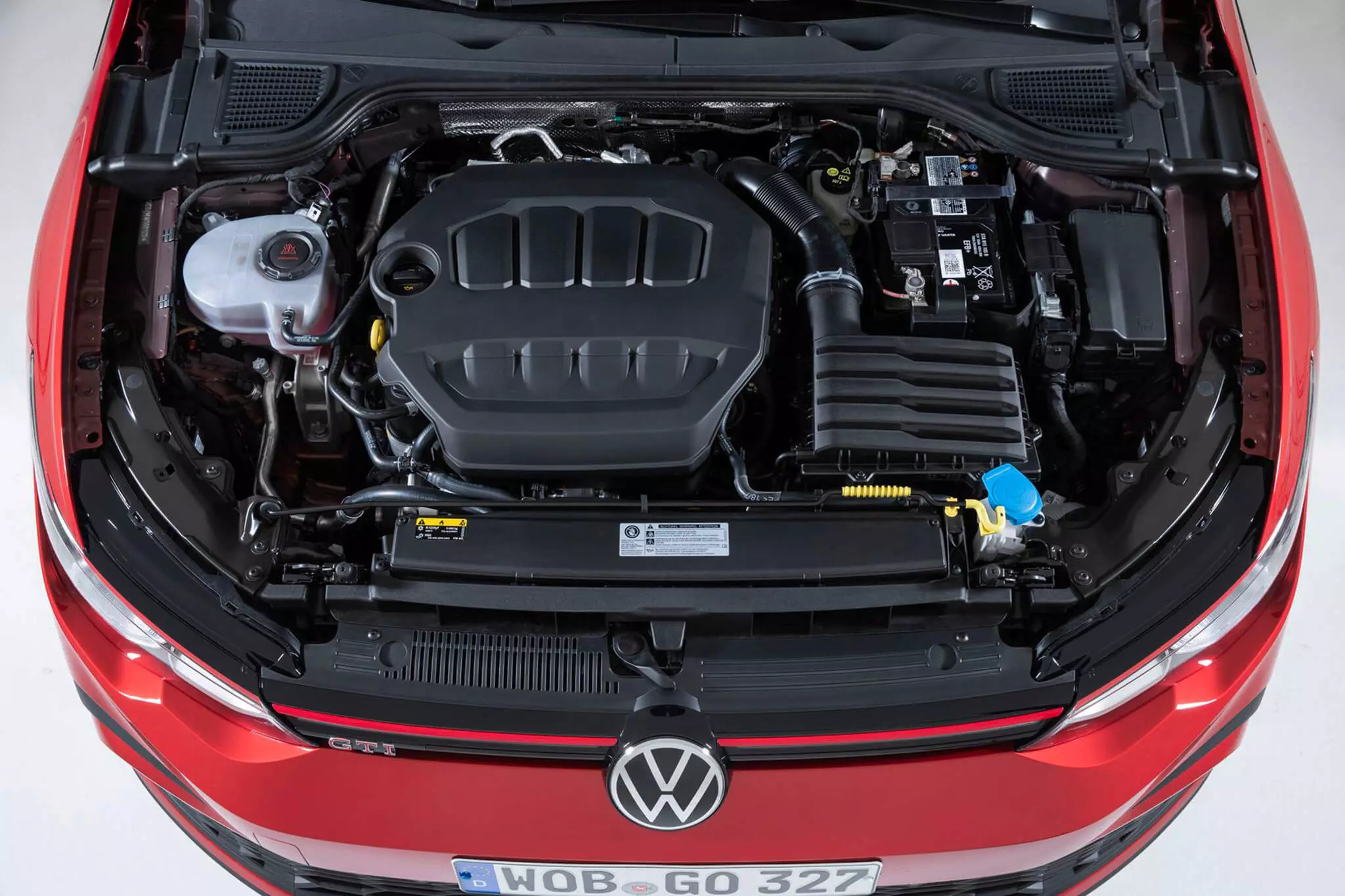
Magnetically actuated injectors started to exist, the gasoline injection pressure rose from 200 to 350 bar, and the combustion process was also “worked”, but there are no tangible gains in these improvements: the maximum value of the torque remains at 370 Nm and in the same regimes — from 1600 to 4300 rpm — the peak power continues to be 245 hp and without variation in revs.
And if we take into account that the previous 230 hp GTi offered maximum torque (slightly lower, it's true) on a plateau that started earlier and lasted longer (1500 to 4600 rpm) we can even ask ourselves about the scant practical result of these evolutions now introduced.
Improve… to maintain
What this means is that the practical benefits of the more advanced technology actually served to keep the performance and performance at the same level as before, given the inclusion of more debugging hardware (read particulate filter and a bigger catalyst ).
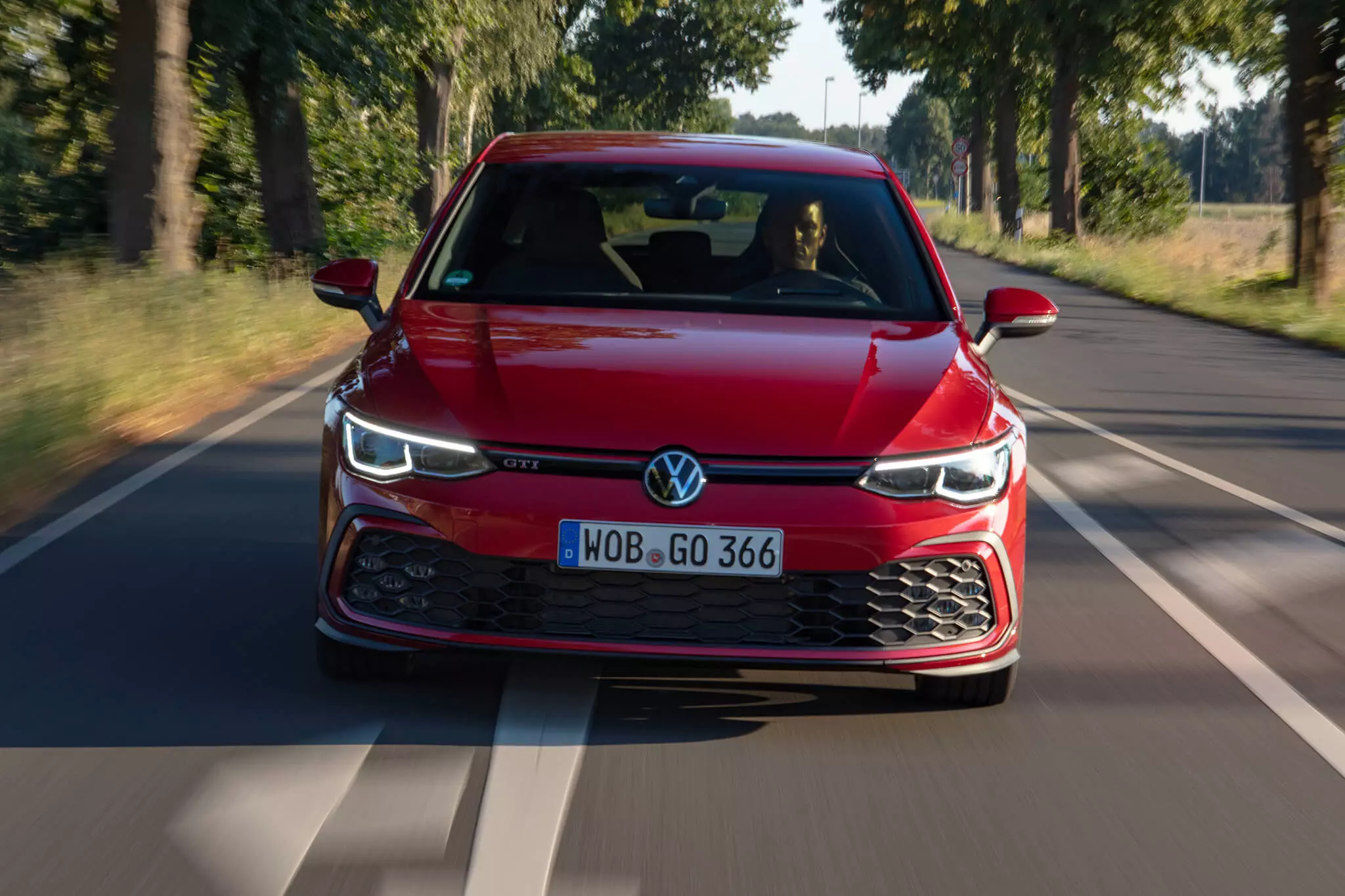
Therefore, the new Golf GTI is just 0.1s slower in the sprint from 0 to 100 km/h (6.3 now, 6.2 seconds earlier) compared to the GTI Performance which is no longer manufactured (at least until we have more official numbers).
It is also worth remembering that even these 245 hp do not allow the new Golf GTI to do a good job when placed alongside some of its rivals, neither in power nor in performance: cases of the Ford Focus ST (280 hp, 5.7s from 0 to 100 km/h), Hyundai i30 N (275 hp, 6.1s) or Mégane RS (280 hp, 5.8s).
It will remain to wait for the version GTi Clubsport which will be presented even at the end of the year and that promises 290 hp to let this competition into sense.
fast and good
Until then, Golf still has a very competent GTI here to go quickly and well.
The steering has a variable ratio (the more you have to turn the wheels, the less range of motion with the arms will be needed, having a ratio of 14:1 at the center and 8.9:1 at the extremes) and is a huge ally to feel always what the steering axle is doing at any given moment, both in weight of steering (which varies with driving modes) and in precision (2.1 turns from top to top show that the answer is tendentially direct).
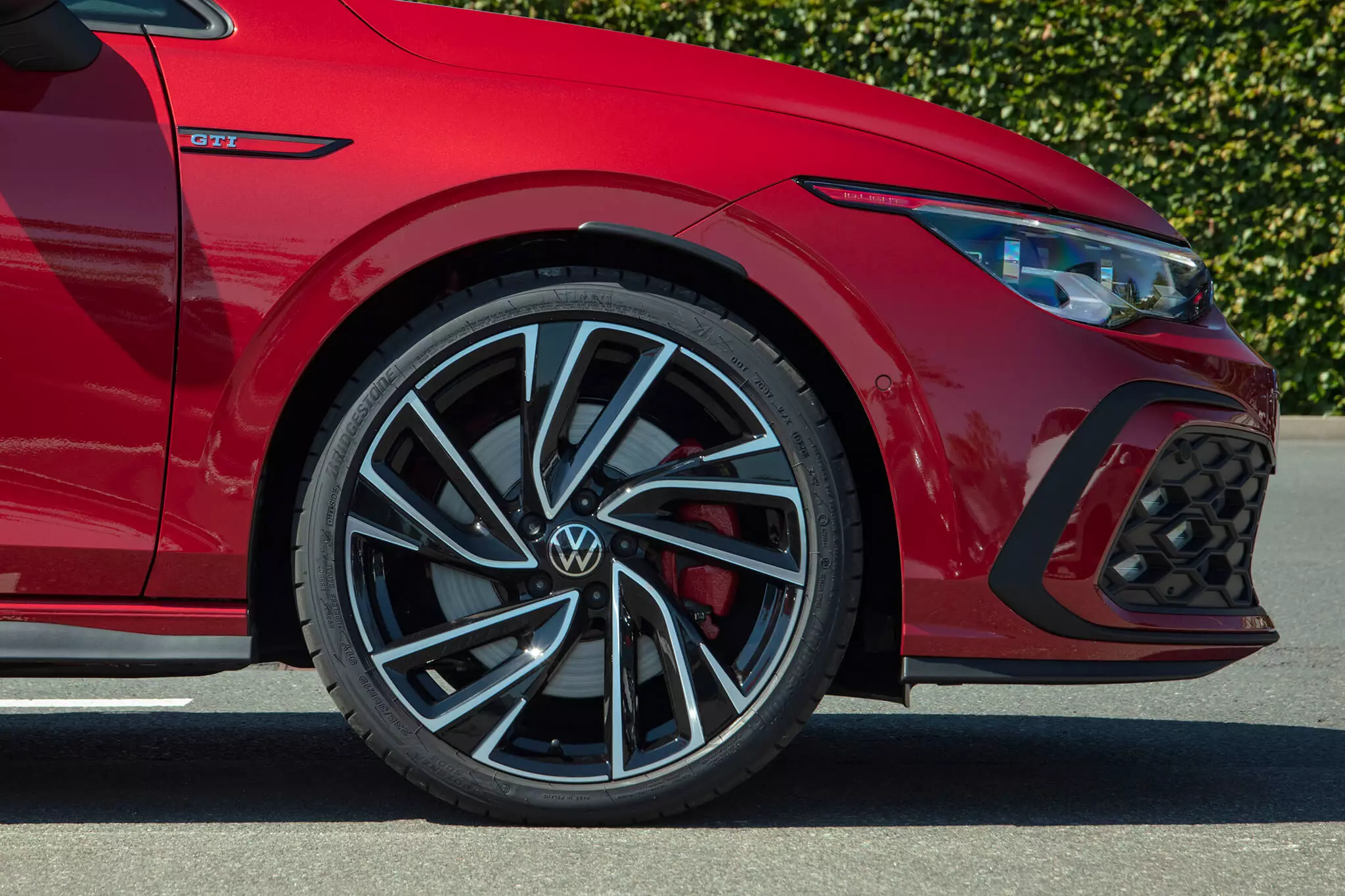
The GTI's suspension is lowered 1.5 cm compared to the quieter versions and the fact that this test unit is equipped with 235/35 R19 tires (the widest and lowest available) helps to create a feeling that the car is really very well planted on the road, even when driving paces increase. In this regard, by the way, Benjamin Leuchter (test pilot who worked on the development of the Golf GTI VIII) explains to me that:
“When changing from 225 tires to 235 in width, the visual effect is small, but what is gained in stability is significant”.
Chassis with the most progress
But Leuchter also clarifies that the most relevant advance in dynamics was the integrated way in which the variable electronic shock absorbers (DCC) and the electronic limited-slip differential at the front (XDS) started to work in an integrated manner and to have faster responses, as a result of the adoption of an intelligent software for this purpose, which Volkswagen calls VDM.
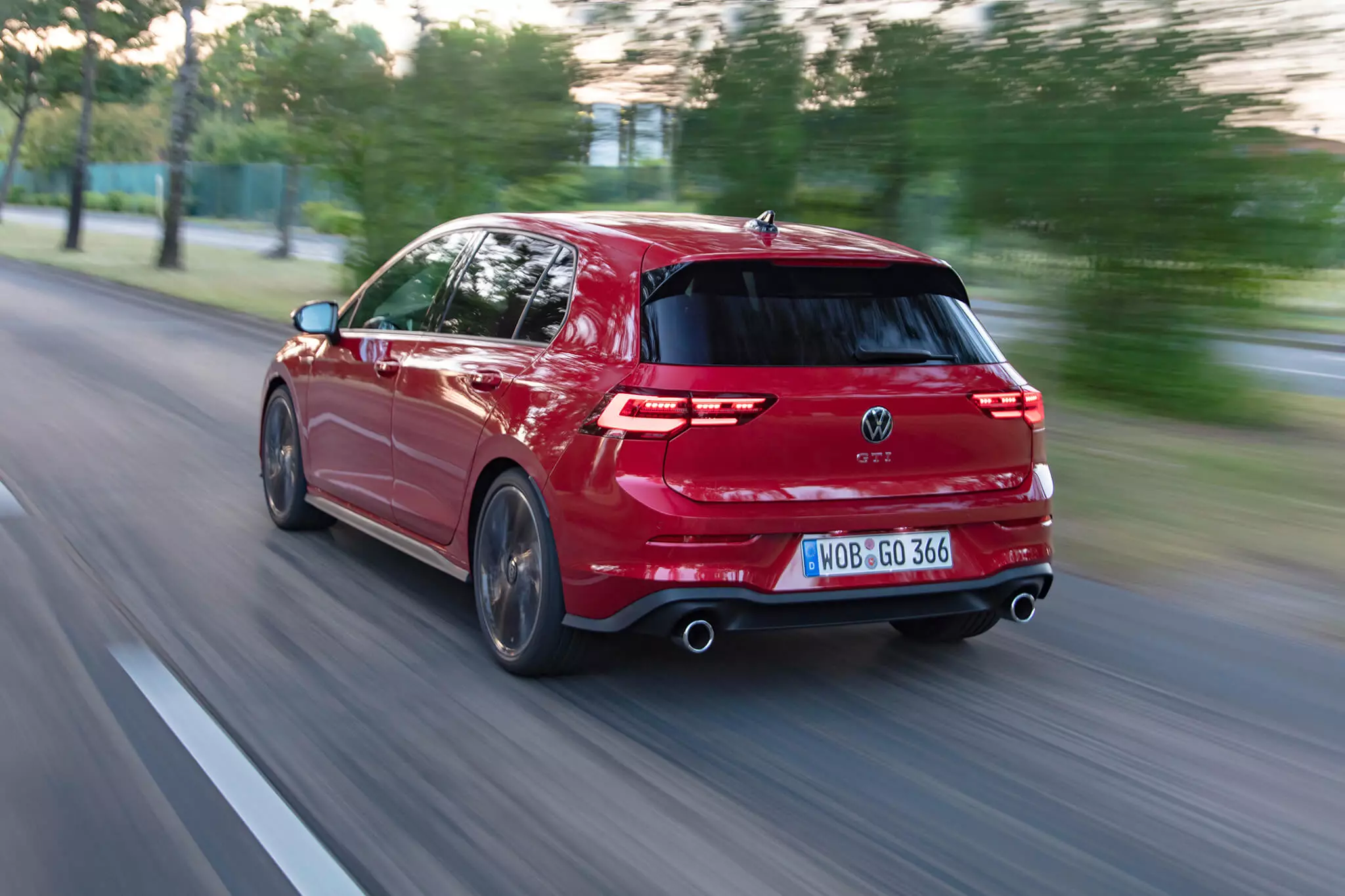
As Leuchter explains, VDM or Vehicle Dynamics Management “controls the steering, the accelerator, the automatic transmission and the electronic shock absorbers and makes the car really more agile and has less traction loss. In a lap at our test circuit, from Ehra, I managed to be 4.0s faster than with the previous car of equal power, this in a perimeter of only 3 km and this in attempts made by the same driver, on the same day and at the same hour".
It is easy to agree that gaining more than one second per kilometer is good progress, which is also supported by the 3 km/h more that the slalom and lane change events could be completed.
Subscribe to our newsletter
Jurgen Putzschler, chief engineer of the new Golf GTi, also highlights the fact that a better control of the body roll was achieved, without losing the refinement in stepping on the road, and there part of the merit must also go to the variation of modes from the most comfortable to the most sporty, from three positions to 15 (within the Individual program): "essentially we have greatly expanded the spectrum of steering/box/engine responses to make the overall response of the car much more ambivalent" .
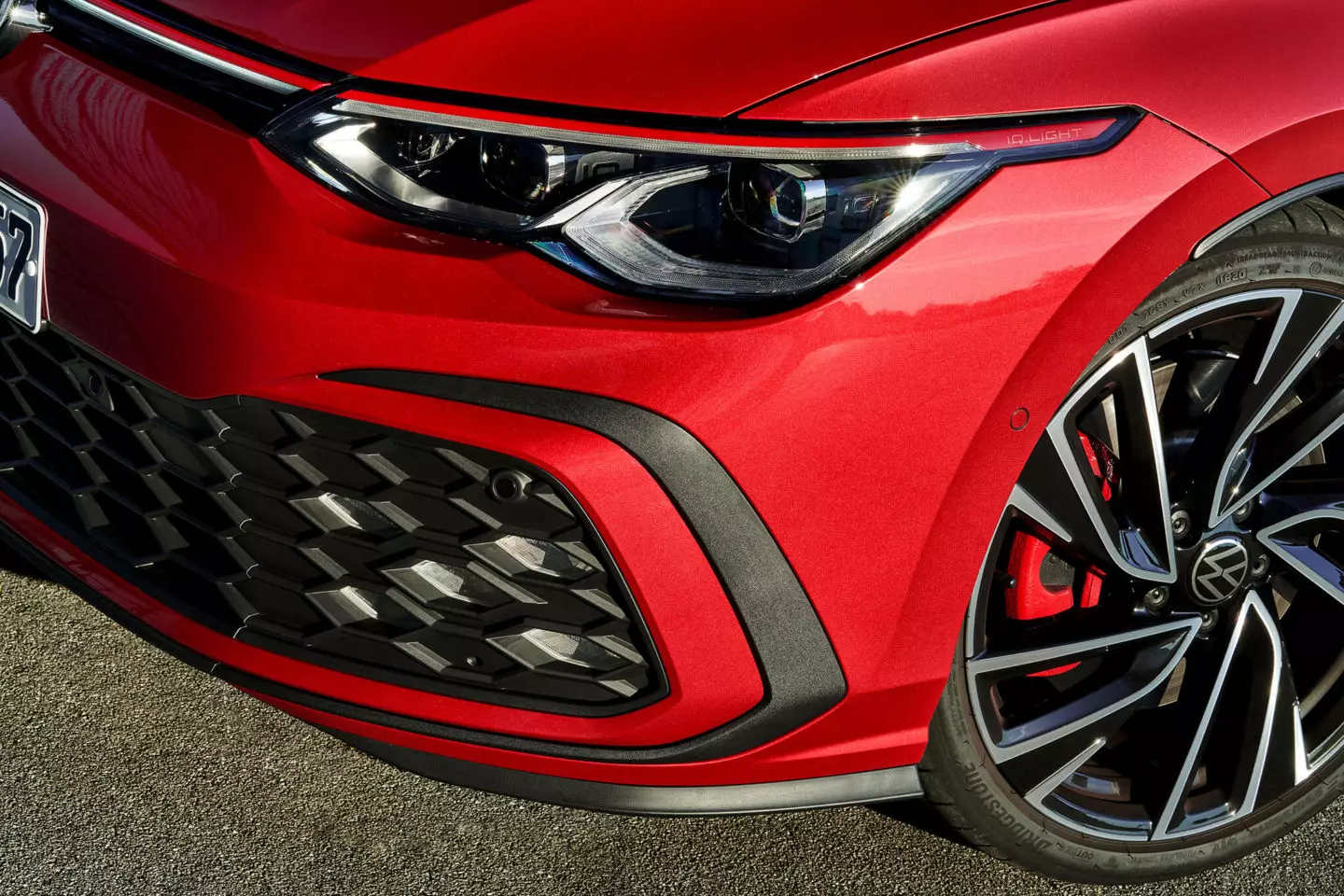
Putzschler further clarifies that the rear suspension is stiffer (with springs 15% stiffer) and that the front axle sub-frame is now made of aluminium, which also helps to raise the overall rigidity of the car, in addition to weighing 3 less. kg.
fast, very fast
I guided the new Golf GTI between Hannover and Wolfsburg in the “home” of Volkswagen, which stopped making international launches of new models elsewhere in this phase of the pandemic in which we live. It's true that there aren't that many winding road segments, but on the other hand, there are many highway areas where we can reach the 250 km/h maximum speed of this model.

In this last scenario, it was evident that it becomes a very fast car, very insensitive to aerodynamic destabilization, but it is also clear that the inclusion of a particle filter and an increase in the catalyst meant that the "singing" of the four cylinders lost its charm. , even with the “digital amplifier”. Even though engineers managed to re-offer the "raters" that were falling into disuse, harassed by increasingly restrictive anti-contamination and noise regulations — they can be heard, albeit discreetly, especially in gear reductions when we selected the Sport mode.
Speaking of the gearbox — seven-speed automatic and dual clutch — it was not entirely convincing because it showed some hesitation in low regimes in urban driving and also for delaying a little reductions in higher engine regimes, trying to compensate (without achieving it ) with a faster operation of the stop/start system (thanks to the adoption of a new electric pump).
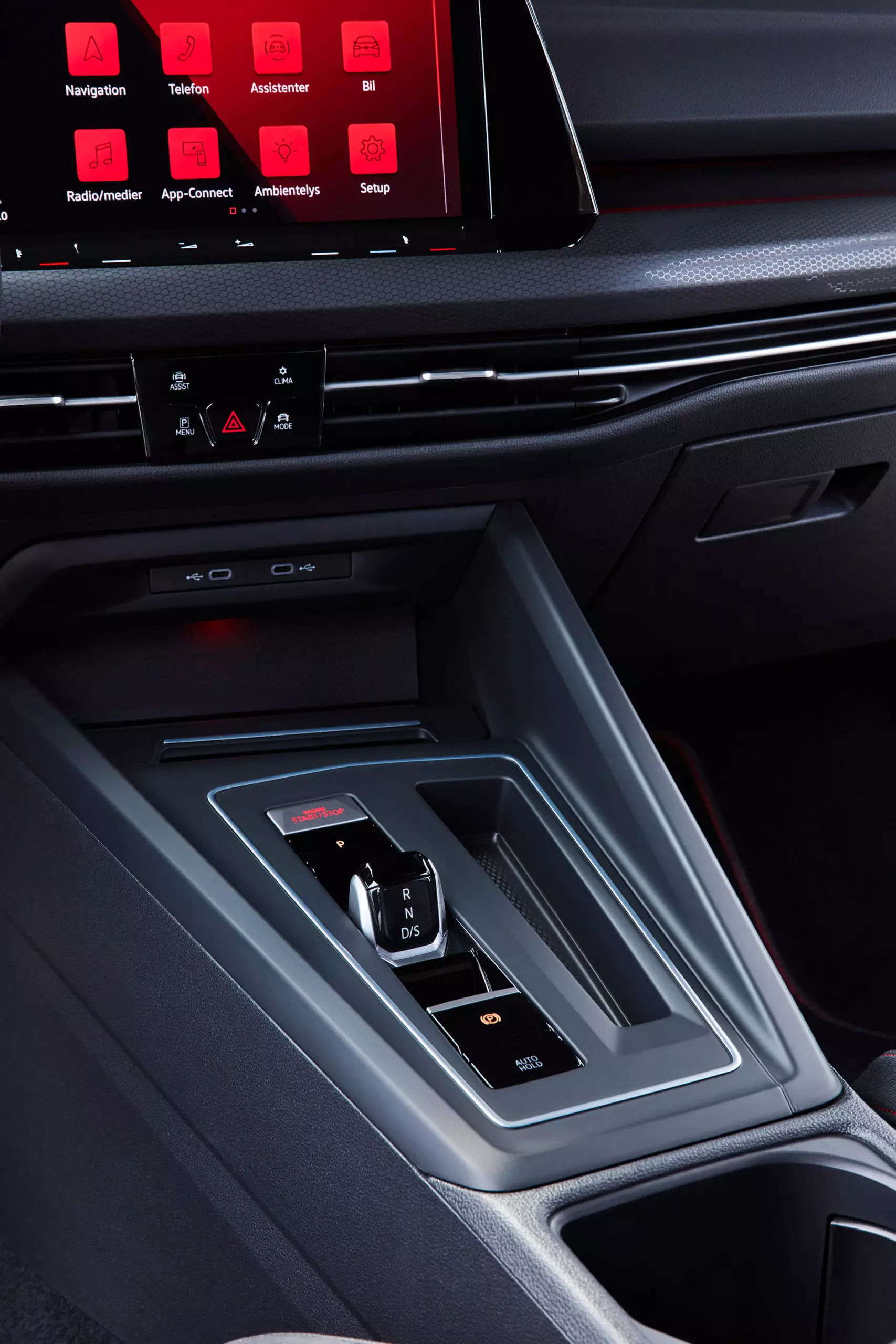
Thinking that the automatic gearbox no longer has the manual selector between the front seats (manual shifts only through the paddles on the steering wheel), replaced by a small “fixed” selector (positions R, N, D/S) perhaps some more passionate users of driving Here are two stimuli to opt for the six-speed manual gearbox.
More effective and ambivalent behavior
And what was it possible to conclude in the most winding stretches that it was possible to discover? Firstly, there are gains in terms of grip and mobility, largely due to the XDS differential (which became standard) and that this helps to make sporty driving more fun and effective.
Exits from sharp corners with strong accelerations are better digested while the stability control is not as intrusive as before in the Normal program — there are two more, Sport (more forgiving) and Off.
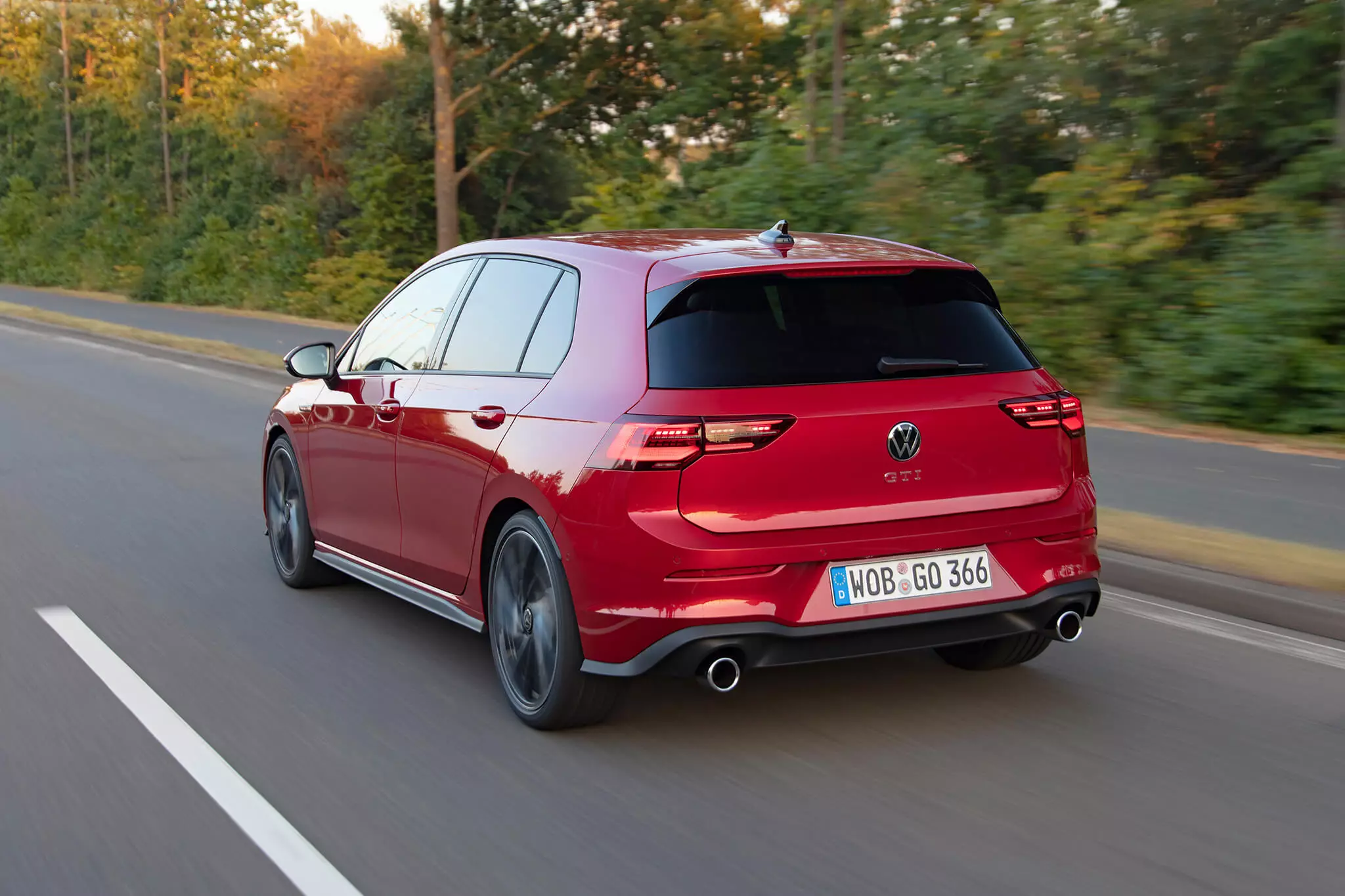
Afterwards, the new Golf GTI really manages to have a moderate behavior and general response, but in the extreme positions of the regulation of the driving modes (1 to 3 and 13 to 15) it becomes really quite comfortable or quite sporty, depending on the time, the location and the will of those who guide.
A final note for the brakes, which are quite powerful and connected to a tactful pedal and for the consumptions, which easily shoot up to an average of 10 liters far from the approval (still to be finalized) that should announce them at 6 l/100 km.
When does it arrive and how much does it cost?
The new Volkswagen Golf GTI starts to reach the main markets in the next month of September. In Portugal, it is estimated that the price starts at 45 thousand euros.

Technical specifications
| Volkswagen Golf GTI | |
|---|---|
| Motor | |
| Architecture | 4 cylinders in line |
| Distribution | 2 ac/c./16 valves |
| Food | Injury direct, Turbocharger |
| Compression ratio | 9,3:1 |
| Capacity | 1984 cm3 |
| power | 245 hp between 5000-6500 rpm |
| Binary | 370 Nm between 1600-4300 rpm |
| Streaming | |
| Traction | Forward |
| Gear box | 7 speed automatic transmission (double clutch). |
| Chassis | |
| Suspension | FR: Regardless of MacPherson type; TR: Regardless of multi-arm type |
| brakes | FR: Ventilated discs; TR: Disks |
| Direction | electrical assistance |
| Number of turns of the steering wheel | 2.1 |
| turning diameter | 11.0 m |
| Dimensions and Capabilities | |
| Comp. x Width x Alt. | 4284mm x 1789mm x 1441mm |
| Length between the axis | 2626 mm |
| suitcase capacity | 380-1270 l |
| warehouse capacity | 50 l |
| Wheels | 235/35 R19 |
| Weight | 1460 kg |
| Provisions and consumption | |
| Maximum speed | 250 km/h |
| 0-100 km/h | 6.3s |
| Mixed consumption* | 6.3 l/100 km |
| CO2 emissions* | 144 g/km |
* Values subject to approval.
